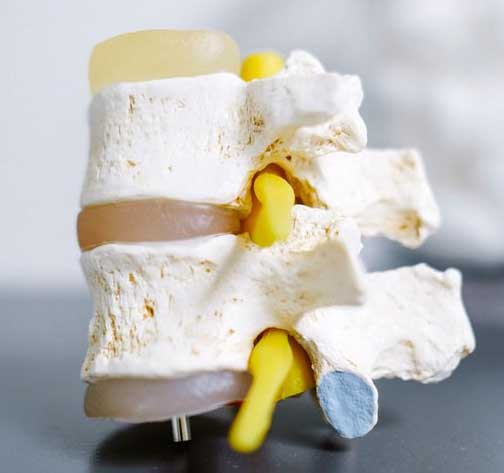
Magnuson Lowell Blog
Each week we post a blog about relevant legal issues. Glance through our various topics to learn more about a particular legal situation.
These articles are for limited informational purposes only and are not, nor are they intended to be, legal advice. You should not rely on this information for your case and should consult with an attorney for advice regarding your individual situation.
Most Recent Posts ...
Posted on: 3/31/2025
Posted on: 3/24/2025
Posted on: 3/17/2025
Posted on: 3/10/2025
Search All Blog Posts
Blog Post Archive Categories
- Reconciling After a Divorce Filing
- Dividing Retirement in Divorce - Do I Need a QDRO?
- Options for Dealing with Real Estate in Your Washington State Divorce
- Positive Thoughts After Losing a Family Law Motion
- Supervised Visitation for Washington Parenting Plans: What You Need to Know
- Filing for Immediate Restraining Orders in King County
- (Redmond/Criminal Defense) Time Matters for a DUI
- (Redmond/Criminal Defense) Field Sobriety Tests - What Not to Do
- (Redmond/Criminal Defense) - The (Redmond/Criminal Defense) - The Ability to Remain Silent
- Battling Father Time: Crafting Your Legacy with Precision
- Tips for Talking to Your Family About Your Estate Plan
- How to Choose Your Personal Representative for your Will
- What is a Trial Continuance in Washington State?
- Renewing a Domestic Violence Protection Order in Washington State
- Little Known Washington Driving Laws
- Divorce Mediation Tips for High-Conflict Couples
- Dealing with Small Business During a Divorce
- The Role of Financial Advisors in High-Asset Divorces
- Why Expediency is Important After Your Car Accident
- Understanding Independent Medical Examinations (IMEs) in Washington State
- It only takes 3 seconds...
- Gotta love our court system!
- (Redmond/Crazy Lawsuit) The Walking Dead: or Not!
- (Redmond/Crazy Lawsuit) Here Comes Football - and Litigation
- Honoring Our Heroes: A Thank You to All Who Have Served!
- Happy Halloween from Magnuson Lowell
- 10 Tips You Need To Know Before Getting On A Motorcycle
- Top 10 Tips You Need To Know Before Getting On A Motorcycle
- Top 10 Tips Riders Need To Know Before Getting On A Motorcycle
- In a Car Collision...Now What?
Disc Herniations After Car Accidents

The human spinal column is one of the most important mechanisms in the body. Besides the bone that comprises the spine itself, there are 23 vertebral discs lining the spine granting us flexibility. As we age, these discs dry out, bend, and even rupture causing many of the back problems older adults experience. Trauma – like the forces of a car accident may have a significant impact on disc degeneration. After a motor vehicle collision, ensuring proper medical care will be key towards your recovery and insurance claim.
You can think of each spinal disc as a jelly donut. There is an exterior shell called the Annulus Fibrosus that surround the core called the Nucleus Pulposus. The outer layer seals the gelatinous inside to remain hydrated. In fact, at birth, about 80% of the disc is composed of water. Desiccation (disc dryness) occurs naturally over time, which leads to the exterior shell cracking and allowing the jelly filled Nucleus to escape. This is the basis of a disc herniation.
Not all disc herniations will cause pain though. Most adults have some spinal disc degeneration. Many adults may even have substantial herniation of their spine without any symptoms. When the gelatinous center of the disc bulges out of the shell it may impact, compress, and irritate nearby nerve roots. When these conditions are met, you may experience back pain, leg pain, numbness, tingling, and weakness.
Car accidents involve substantial forces on the spine in both your neck and back as it is whipped back and forth between the seatback and the seatbelt. It is possible – if the forces are sufficient – for a “fresh” spine to herniate. More likely, however, aggravations of spinal degeneration will occur. In other words, a weakened spine that is already degenerated is more likely to herniate further. Alternatively, a disc bulge that already exists might squeeze further out and impact the nerves after a collision causing pain symptoms that didn’t exist before.
Often, conservative management with physical therapy, chiropractic, and massage may be sufficient to relieve the pressure on the spinal nerve roots to reduce or remove the pain. If the pain lingers (especially if there are nerve symptoms like weakness, tingling, and numbness), MRI imaging should be used to confirm proper diagnoses and allow for a new treatment protocol. These treatments might include epidural steroid injections to help relieve stress and pressure on the disc and even surgery to clean up the bulge and physically remove the impact on the nerve roots (called a spinal discectomy).
After a collision, spinal pain should be treated seriously. Obtaining medical treatment is only half the battle as auto and medical insurance companies will use their knowledge of these systems to manipulate the claims in their favor. Personal injury attorneys have the experience to push back against these insurance violations. The experienced litigators at the law offices of Magnuson Lowell PS are available to help pursue your insurance claim and personal injury lawsuit. Call today for a free case evaluation.




